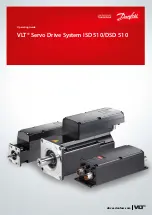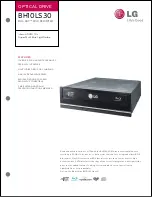
3
E M E R G E N CY L E D D R I V E R :
I N S TA L L AT I O N A N D O P E R AT I N G I N S T R U C T I O N S
WWW.HATCHLIGHTING.COM • 7821 W
OOdLANd
C
eNTer
B
Lvd
. T
AMpA
, FL 33614 • pH: 813.288.8006 • FX: 813.288.8105 • S
ALeS
@
HATCHLIGHTING
.
COM
r
ev
: 07/23/2020
WIRING DIAGRAM - TYPICAL APPLICATION
OPERATION
Normal Mode: AC power is present. The AC driver operates the LED load as designed. The emergency pack is charging in a standby mode.
The test button will be illuminated green, showing that AC power is present.
Emergency Mode: In the event of a power failure, the LED emergency driver switches to emergency mode and operates the fixture at a
reduced light output level for a minimum of 90 minutes. The test button will be flashing green.
Testing Procedures
Prior to initial testing, allow unit to charge one hour. For 90 minute test, allow unit to charge for 24 hours.
a. Press the test button twice or toggle the wall power switch to the luminaire 3 times to switch the system to Emergency Mode for a
30-second test. Allow the system to charge for 24 hours prior to conducting any other testing.
b. Press the test button three times or toggle the wall power switch to the luminaire four times to switch the system to Emergency Mode
for a 90-minute test. Allow the system to charge for 24 hours prior to conducting any other testing.
Testing can be canceled at any time by pressing the test switch once or toggling the wall switch two times.
NFPA 101, Life Safety Code outlines the following testing schedule:
i. Monthly: Ensure that the test button light is illuminated green. Conduct a 30 second discharge test by depressing the test button for
30 seconds. The LED load should operate at reduced output.
ii. Annually: Ensure that the test button is illuminated green. Conduct a full 90-minute discharge test. The unit should operate as
intended for the duration of the test.
iii. “Written records of the testing shall be kept by the owner for inspection by the authority having jurisdiction.”
Diagnostics
The ELP20-2060-UNV-SD emergency driver features advanced diagnostic capabilities, providing more flexibility for conducting system
testing. Complete system testing can be conducted either using the two-wire test switch provided with the unit, or can be initiated from
the wall power switch that powers the fixture. An advanced charging system monitors the battery voltage so that overcharging and deep
discharging is prevented, maximizing battery life. A two-color test switch uses flashing fault codes to let users know the status of the system
and to report diagnostic information.
Flashing Fault Codes:
• Flashing green: System is charging
• Solid green: Fully charged; in standby or emergency mode.
• Single red flashing: Battery charge failure. Check battery connector. If problem persists replace unit.
• Double flashing red: Low battery voltage. Battery charge level is below operational level, or battery is defective. If double flashing red
continues after 2 hours, replace system.
• Triple flashing red: Load voltage too low. The LED load connected to the driver is outside the normal operating range of the driver.
Emergency driver is not compatible with fixture load.
LED Driver
LED Emergency
Driver
L
N
L
N
(Black)
(White)
(Black/White)
(Black)
(White)
LED +
LED -
Fixture LED
Load
(Red)
(Black)
(Brown)
(Red AWG#18)
(Blue AWG#18)
(Red AWG#22)
(Blue AWG#22)
Test
Switch/Charge
Indicator
Wall Switch
Battery
Connector
+
-
Luminaire Modification Label
Make sure to adhere luminaire modification label to the fixture where it is easily visible to anyone servicing the fixture in the future.
Wiring
Connect wires per wiring diagram below according to application. Do not mate battery connector until all wiring is complete and power is
restored. Wiring diagram for typical application that shares the fixture’s LED load is seen below. For alternate application wiring diagrams see
Hatch website at
www.hatchlighting.com/led-emergency-drivers
.
NOTE: Emergency driver housing must be grounded.





















